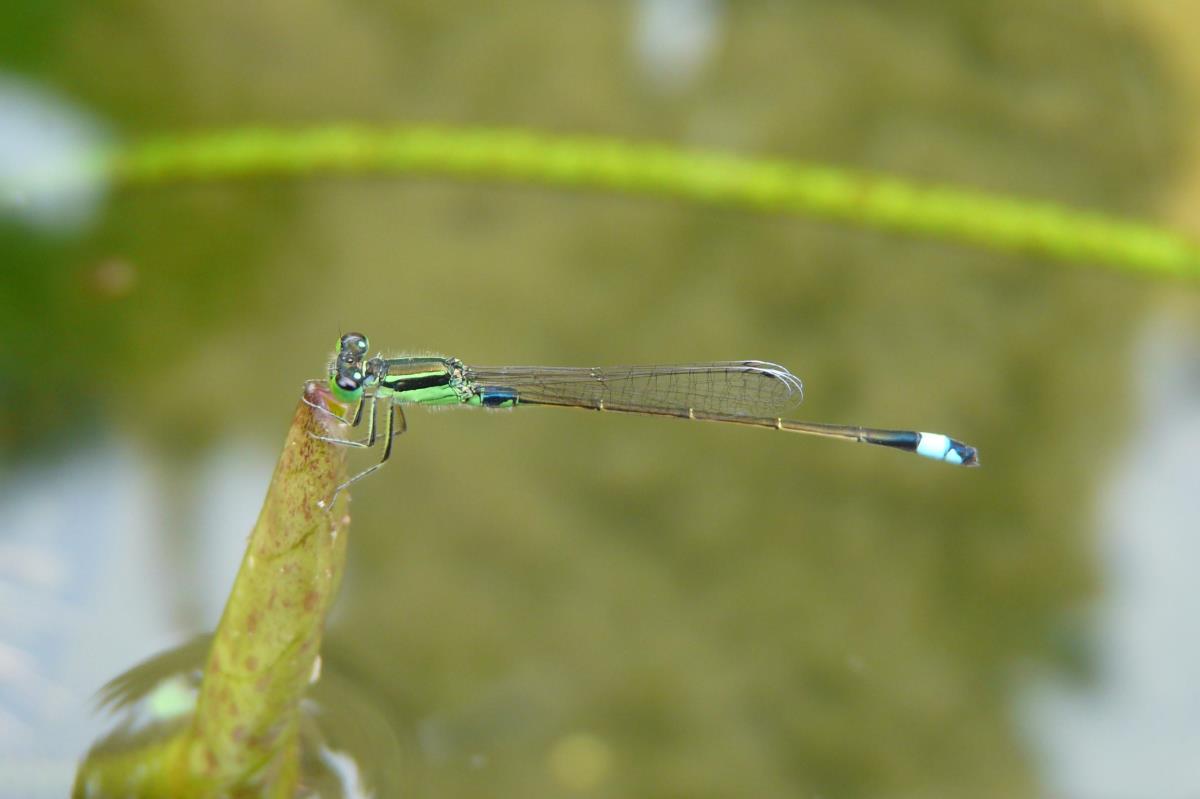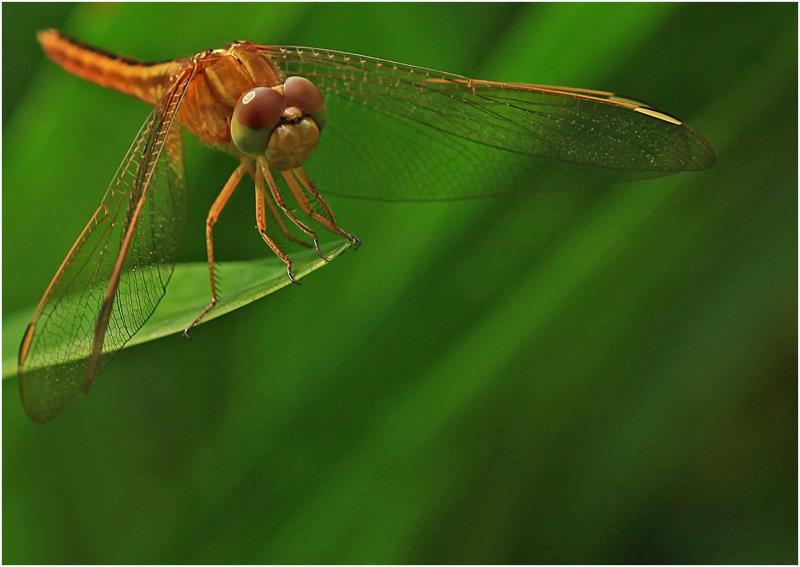Damselflies of Jurong Lake Gardens
Damselflies are from the suborder Zygoptera. They are more slender than their dragonfly relatives and have similarly shaped forewings and hindwings. At rest, the wings are held closed and above the abdomen. They are weak fliers and their compound eyes are set distinctly apart.
Variable Wisp
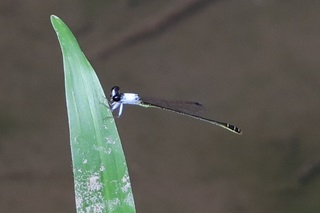 Mature male. Photo credit: Ruth Tan (NParks) Mature male. Photo credit: Ruth Tan (NParks) |
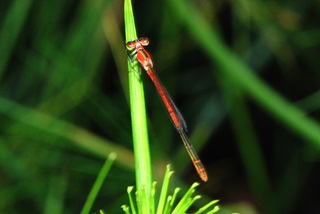 Immature female. Photo credit: Robin Ngiam (NParks) Immature female. Photo credit: Robin Ngiam (NParks) |
| Scientific name: | Agriocnemis femina |
| Common name: | Variable Wisp |
| Family: | Coenagrionidae |
 20 mm 20 mm |

Variable wisps are one of the smallest damselflies in Singapore. Their wings are only about 1 cm long! It can be difficult to identify them as their colour changes with age.
Before maturity, males have a greenish thorax with an orange abdomen tip. This changes to a dark abdomen with a white thorax when mature. Females before maturity are bright red but will become dull olive when mature.

They can be found along the water’s edge and just above the grass line in most of our parks, but a keen eye is required to spot them!
Common Bluetail
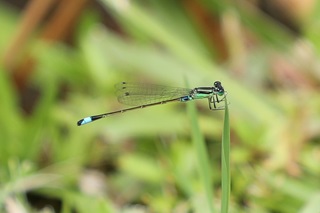 Male. Photo credit: Ruth Tan (NParks) Male. Photo credit: Ruth Tan (NParks) |
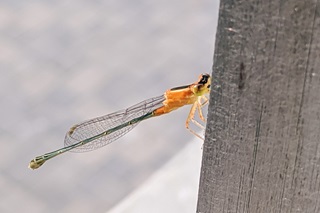 Female. Photo credit: Tan Jing Wen Female. Photo credit: Tan Jing Wen |
| Scientific name: | Ischnura senegalensis |
| Common name: | Common Bluetail |
| Family: | Coenagrionidae |
 28–30 mm 28–30 mm |

Males can be easily identified by their green thorax and blue abdomen tip. Females come in a variety of colours, but the most common is a golden orange thorax. Sometimes, females can look similar to males too!

They thrive in disturbed and open habitats and can be seen in almost all the ponds in our parks and gardens. They range widely from Africa and Asia to the island of New Guinea.
Ornate Coraltail
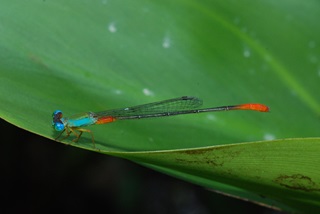 Photo credit: Robin Ngiam (NParks) Photo credit: Robin Ngiam (NParks) |
| Scientific name: | Ceriagrion cerinorubellum |
| Common name: | Ornate Coraltail |
| Family: | Coenagrionidae |
 35–38 mm 35–38 mm |

The Ornate Coraltail is a common damselfly that is easily identified by its bluish green thorax and dark abdomen with an orange tip. Females look similar to males.

Any vegetated pond is suitable for this adaptable species. They are distributed across the Indian subcontinent and Southeast Asia.
Blue Sprite
| Scientific name: | Pseudagrion microcephalum |
| Common name: | Blue Sprite |
| Family: | Coenagrionidae |
 35–38 mm 35–38 mm |

The males of this damselfly are sky blue with black bands on their thorax. Females are generally pale brown with thin streaks of blue on their thorax.

This species is highly adaptable and common in our urban wetlands. They can be spotted perching on vegetation or twigs, or flying just above the water’s surface.
Banner: Common Bluetail (male). Photo credit: Robin Ngiam (NParks)


